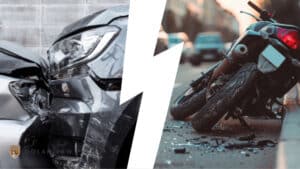 Today’s question comes from Wallace D. in Knob Hill who asks: “I read your article on the driverless vehicle. Isn’t this just sci-fi? Will they ever actually hit the market and if they do, what will they look like and who will be responsible if there is a crash?
Today’s question comes from Wallace D. in Knob Hill who asks: “I read your article on the driverless vehicle. Isn’t this just sci-fi? Will they ever actually hit the market and if they do, what will they look like and who will be responsible if there is a crash?
According to the National Highway Transportation and Safety Administration (NHTSA), in 2011 America’s 212 million licensed drivers crashed over 5.3 million times, injured 2.2 million people and killed another 32,367. Road traffic injuries have become the leading killer of young people aged 15 to 29. According to a World Health Organization Report, almost 1.3 million people die each year on the world’s roads making this the ninth leading cause of death, globally.
Worldwide, road crashes cause between 20 million and 50 million non-fatal injuries every year.
A 2008 NHTSA study revealed that in collisions where the critical reason for the crash was driver error, about 41 % of the critical reasons were recognition errors (inattention, internal and external distractions, inadequate surveillance, etc.); around 34 % were decision errors (driving aggressively, driving too fast, etc.); and 10 % were performance errors (overcompensation, improper directional control, etc.).
About 18 % of the drivers involved in collisions were engaged in at least one interior non-driving activity. The most frequent interior non-driving activity was conversation, either with other passengers in the vehicle or on a cell phone, especially among young (age 16 to 25) drivers. Fatigued drivers were twice as likely to make performance errors as compared to drivers who were not fatigued.
Apparently, we are not that good at driving and there is strong evidence that AV technology may dramatically alter the collision matrix. Indeed, Silicon Valley, the leading auto manufactures and even NHTSA think what is best is to remove us from the interface i.e., take us out of the driver’s seat.
One model for the future is the vehicle to vehicle (V2V) approach whereby on-board dedicated short-range radio devices are used to transmit data regarding vehicle speed, direction, braking, etc., between vehicles. NHTSA, in its August 2014 Study entitled Vehicle-to-Vehicle Communications: Readiness of V2V Technology for Application , outlined the Government’s vision of the future of technology and transportation.
Make no mistake, it is not an “if” but “when” scenario which NHTSA presents. One V2V application cited in the study is called Intersection Movement Assistance (IMA). IMA warns the driver of a vehicle when it is not safe to enter an intersection due to a high probability of colliding with one or more vehicles at intersections both where a signal is present (a “controlled”
intersection) and those where only a stop or yield-sign is present (an “uncontrolled” intersection).
NHTSA estimates that just two of many possible V2V safety applications, IMA (Intersection Movement Assistance) and LTA (Left Turn Assistance), would, on an annual basis, potentially prevent
25,000 to 592,000 crashes, save 49 to 1,083 lives, avoid 11,000 to
270,000 injuries, and reduce 31,000 to 728,000 property damage only crashes by the time V2V technology spreads through the entire fleet.
NHTSA is also investigating a Vehicle to Infrastructure (V2I) system wherein vehicles “talk” to a communications infrastructure rather than directly to each other. The infrastructure would then coordinate the movements of multiple vehicles traveling over its grid.
Your question regarding when a collision occurs involving an AV, who is responsible is a very good one. Up until now this has been a simple question: why the driver of course!
Now the calculus on duty, breach and causation is uncertain. Is it the passenger, the owner of the vehicle, the software manufacturer or, perhaps, all three? At this point several states, such as California and Nevada, have determined that the “operator” is liable for any injury or damage caused by the vehicle. In these states the “operator” is the person who either is behind the controls available for use in manual applications, or, in the absence of manual controls, the one who “causes the technology to engage.”
In California all developers who have autonomous or semi-autonomous vehicles on the road are required to obtain a permit for operation of an AV and carry $5,000,000.00 in liability insurance.










